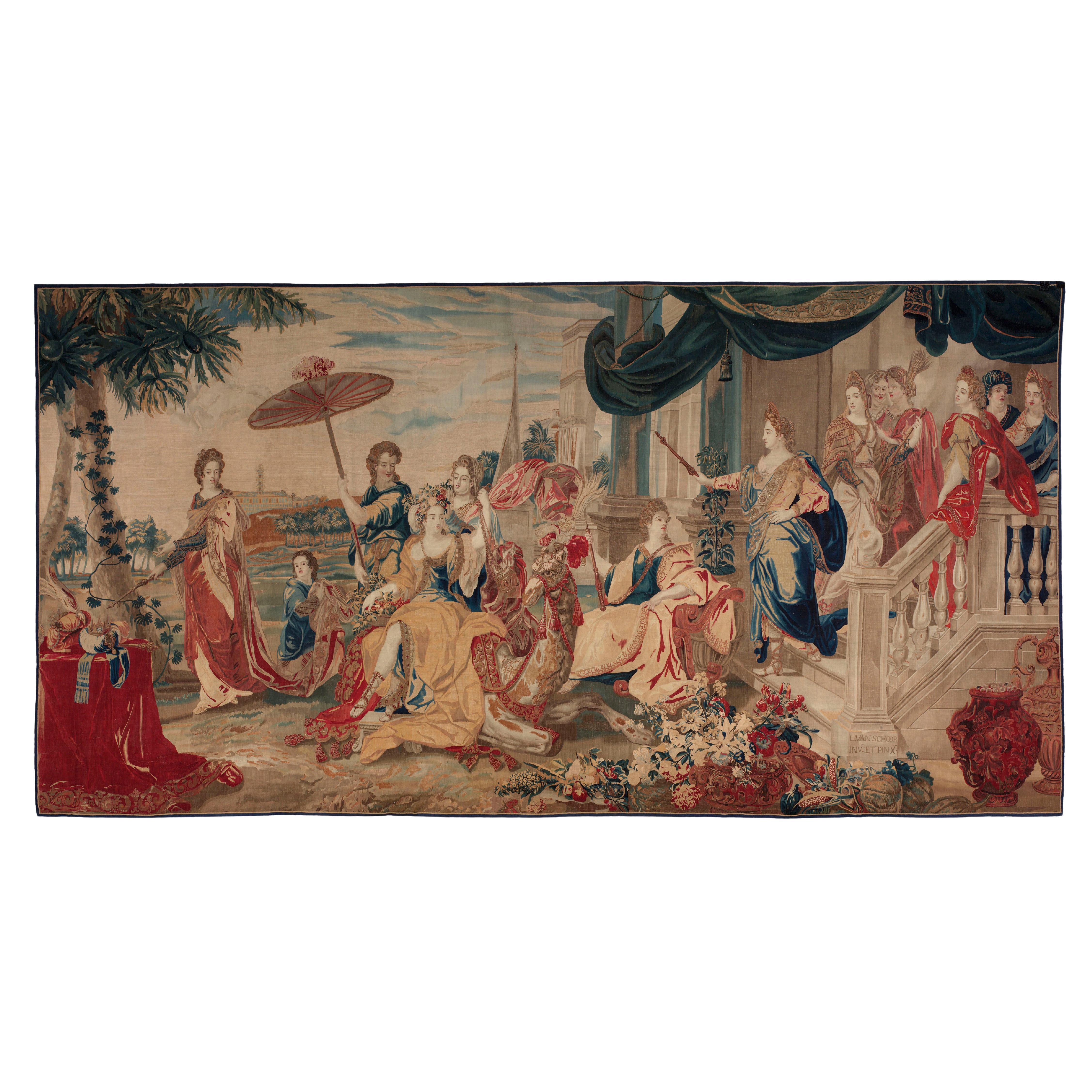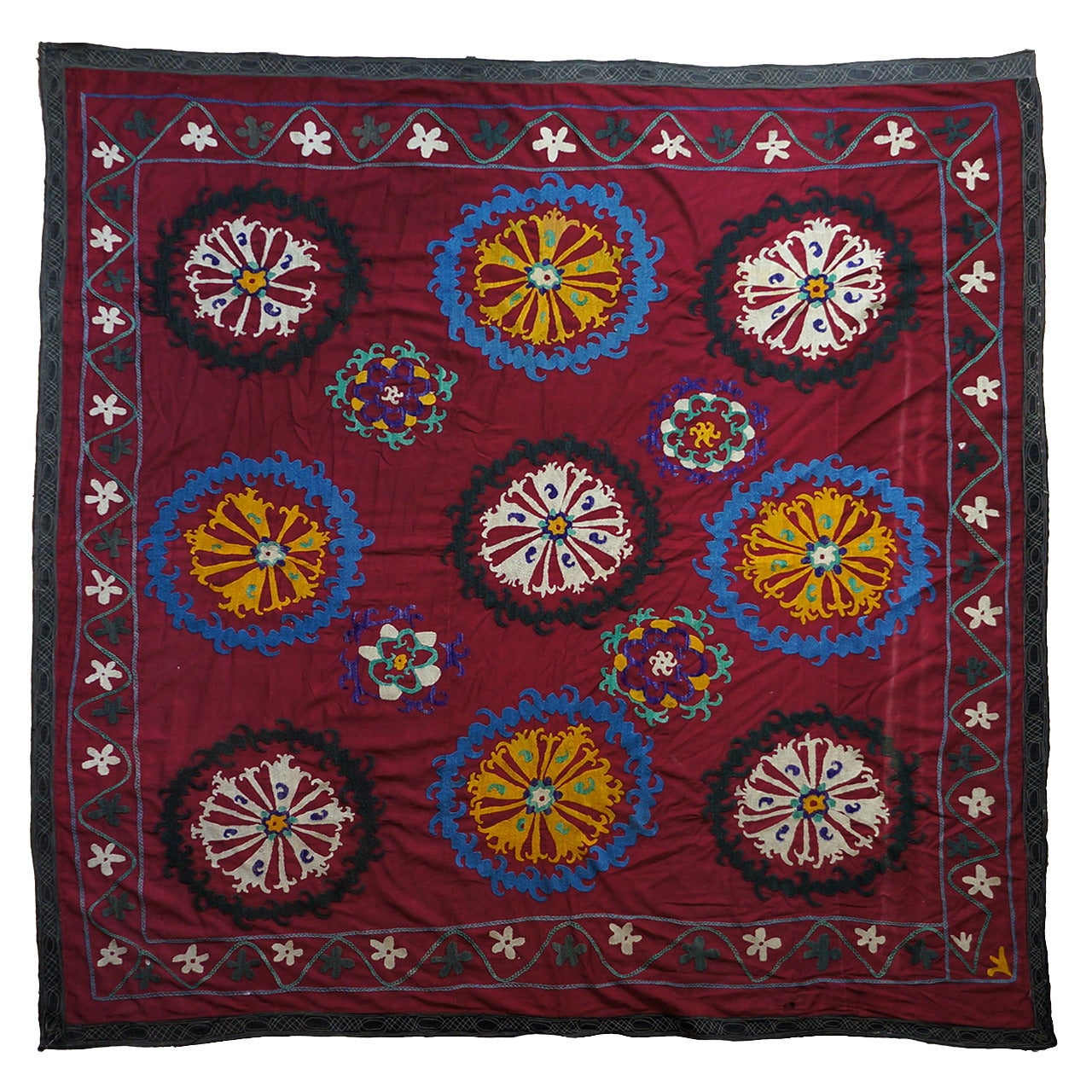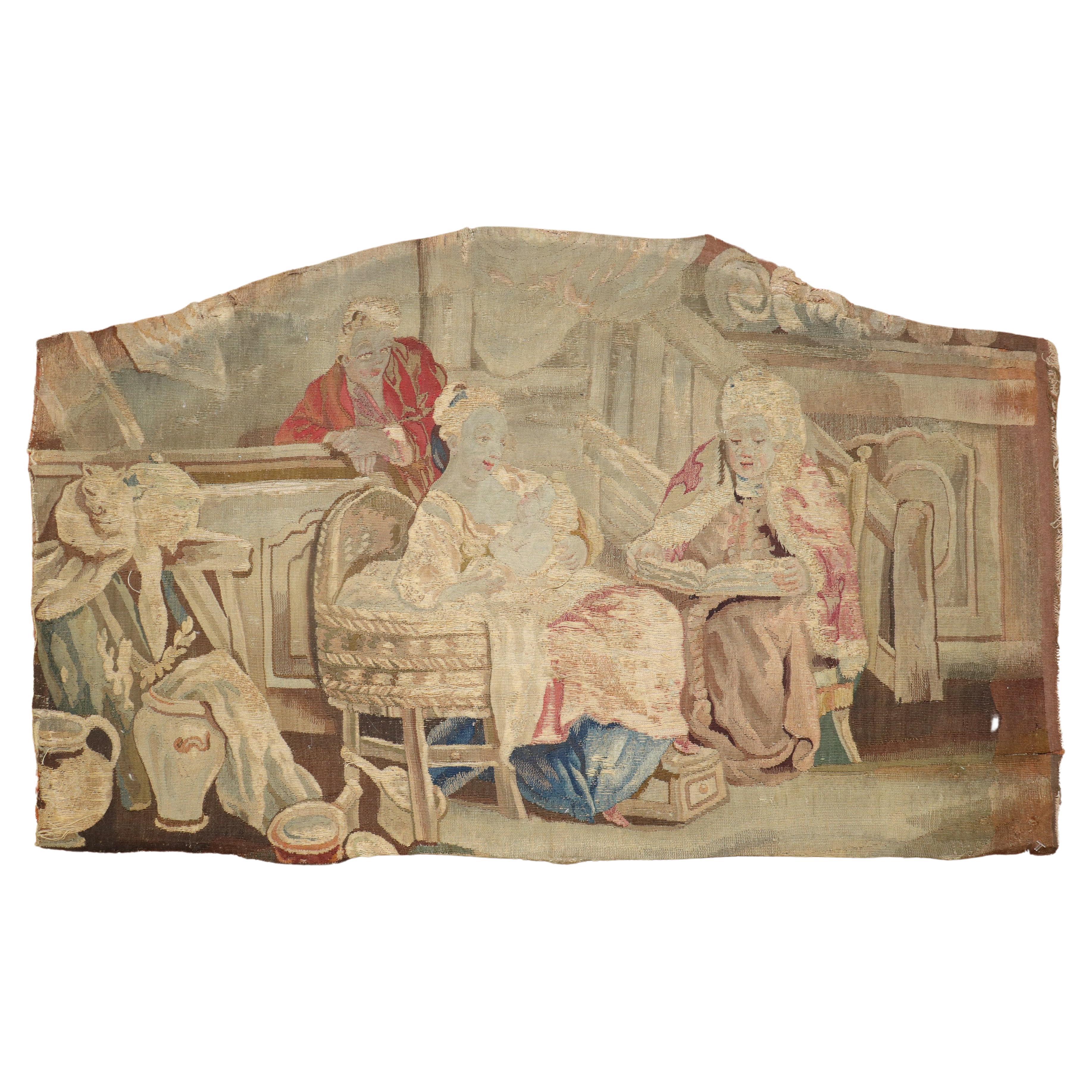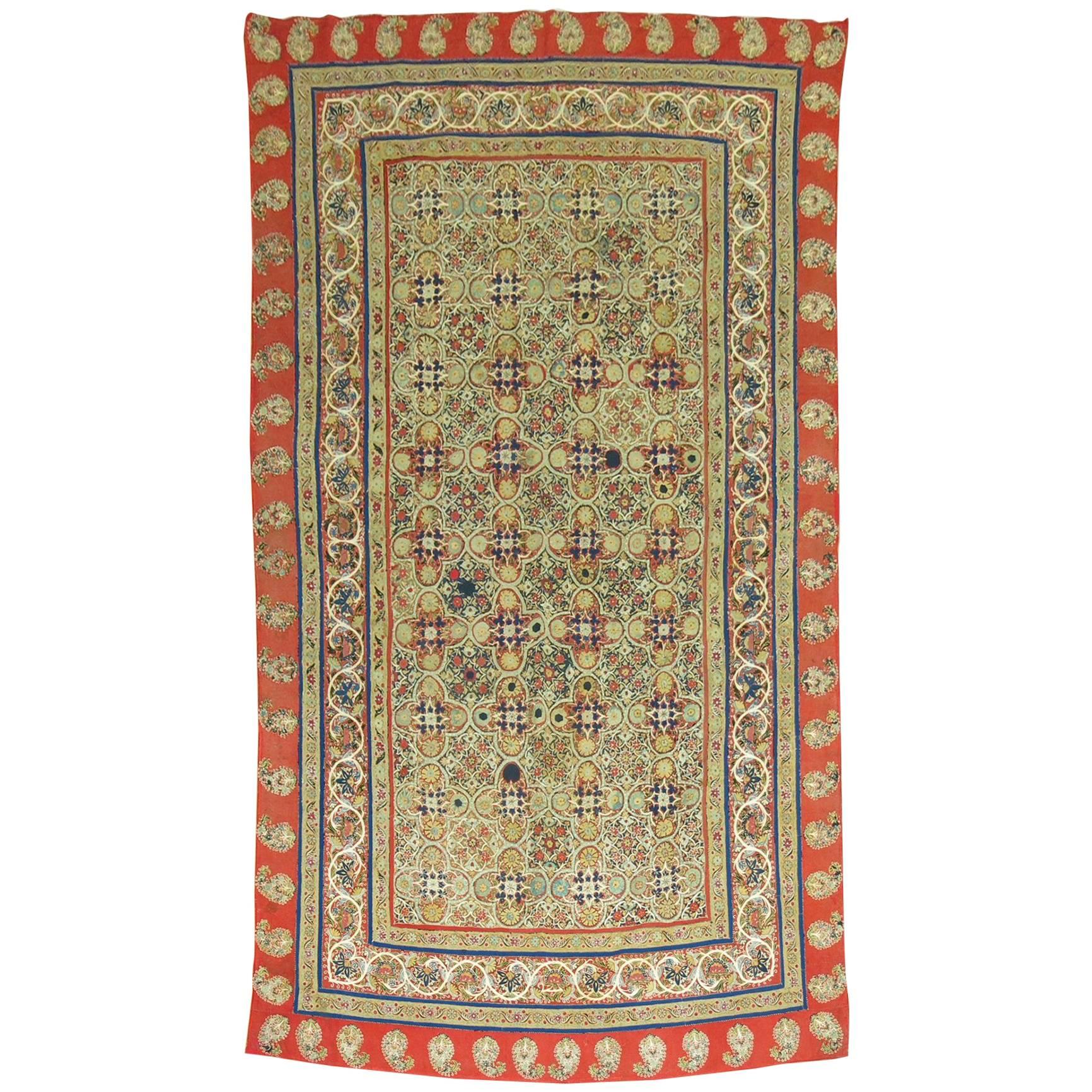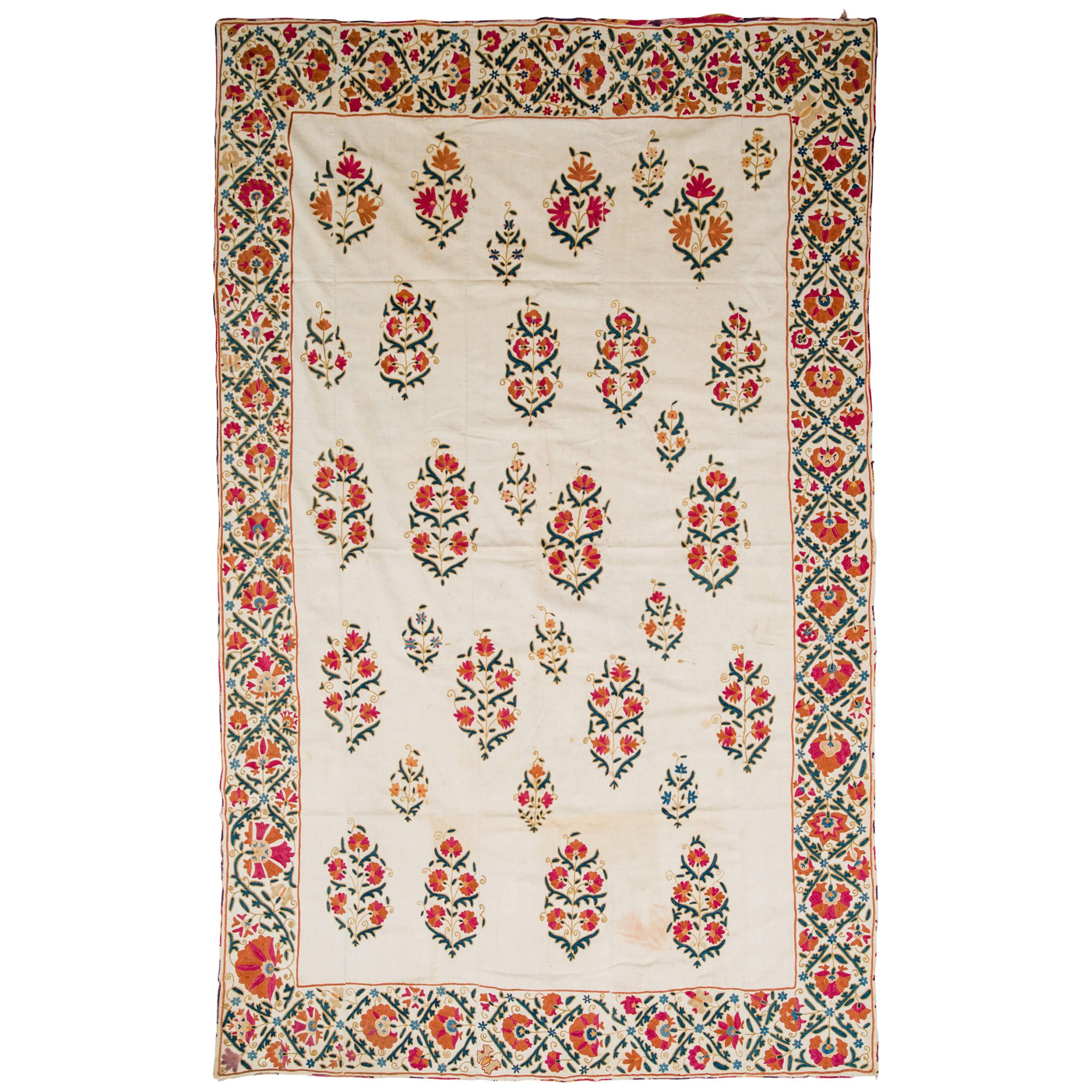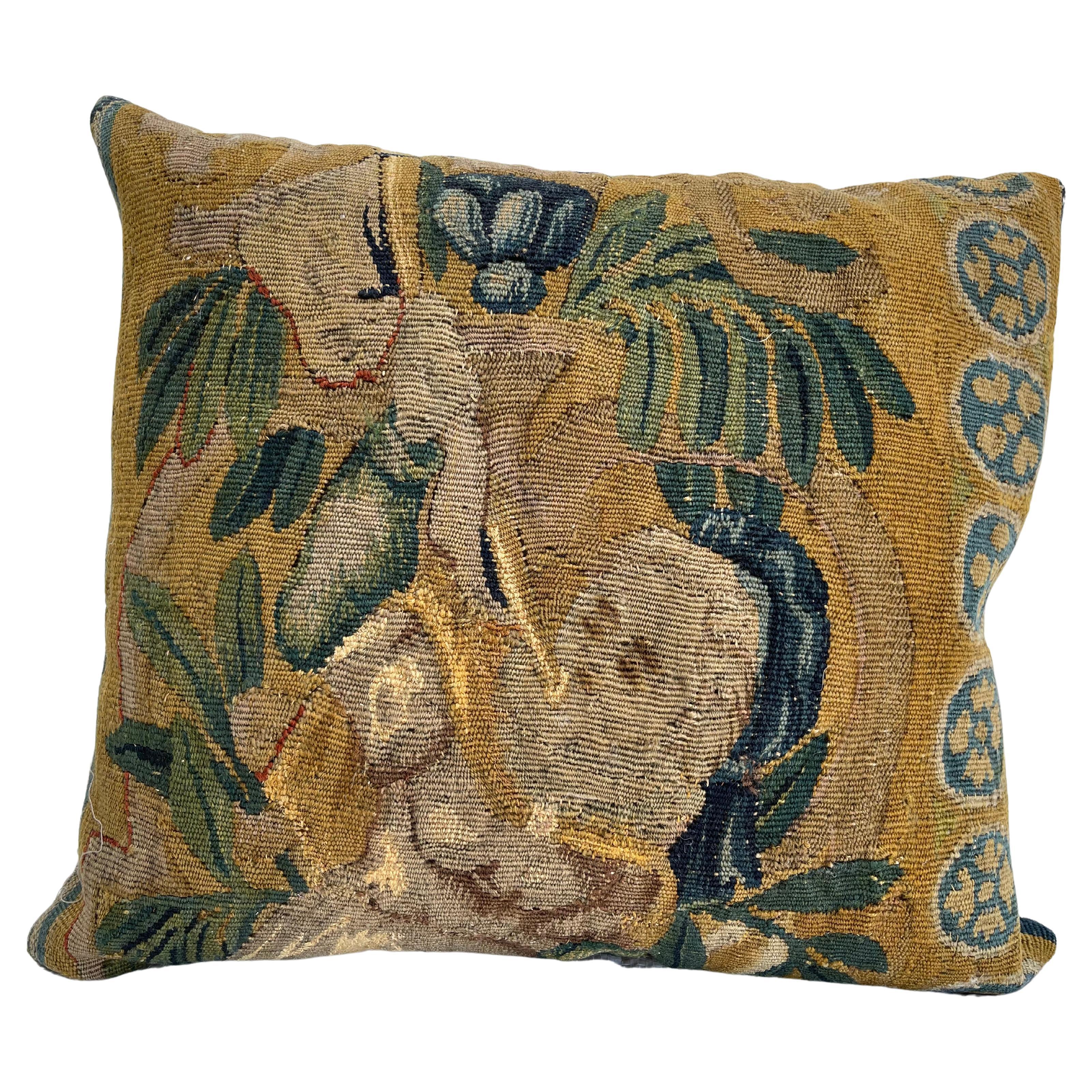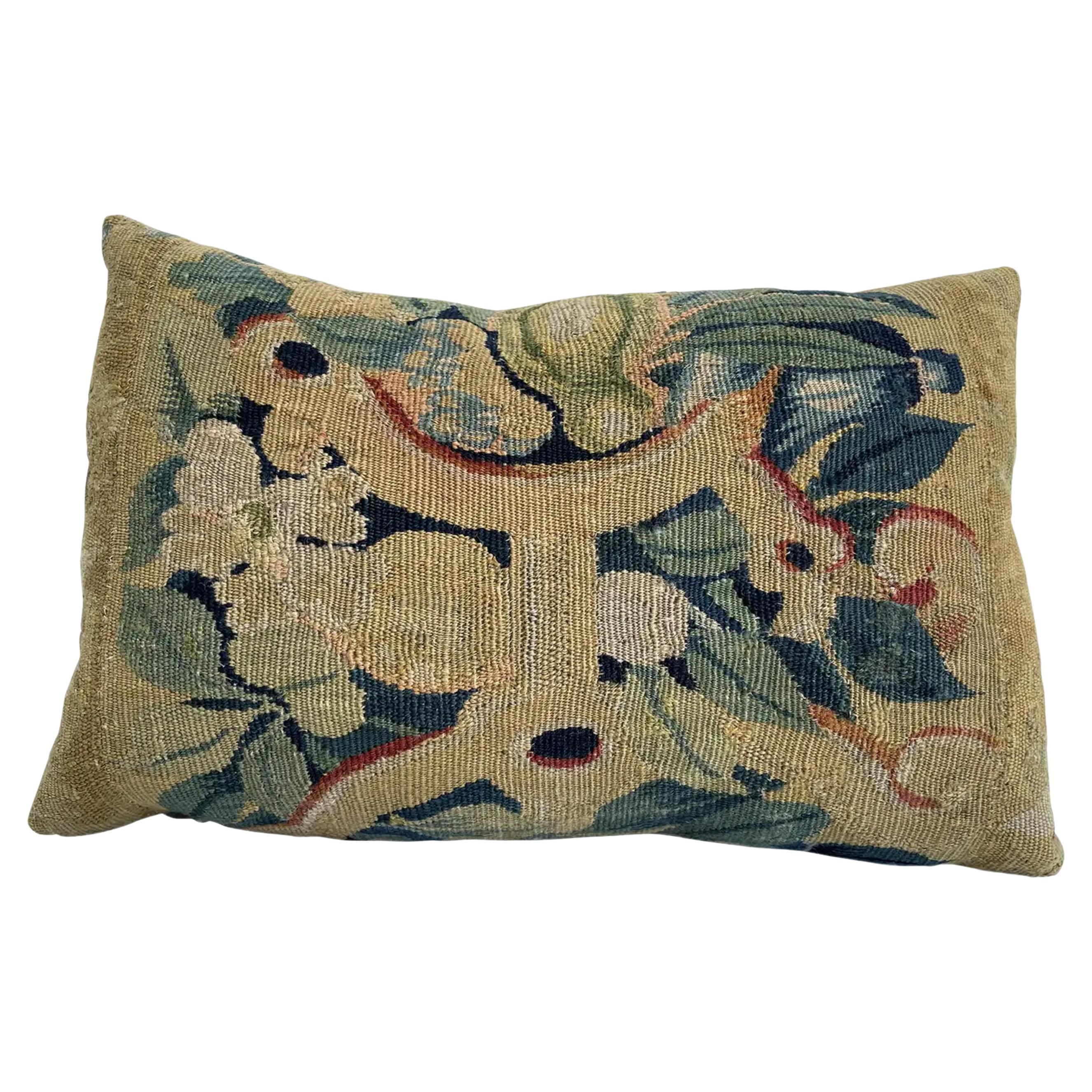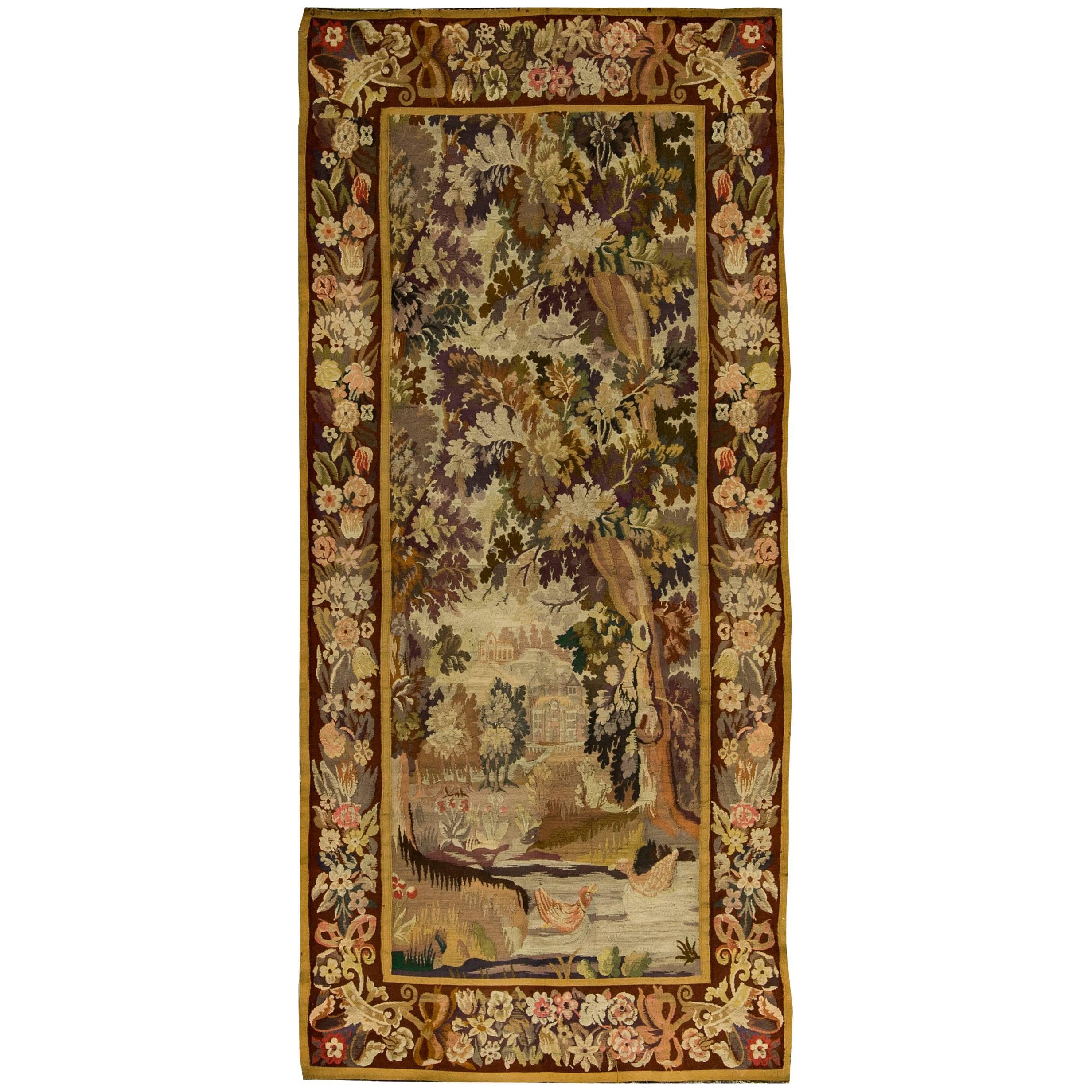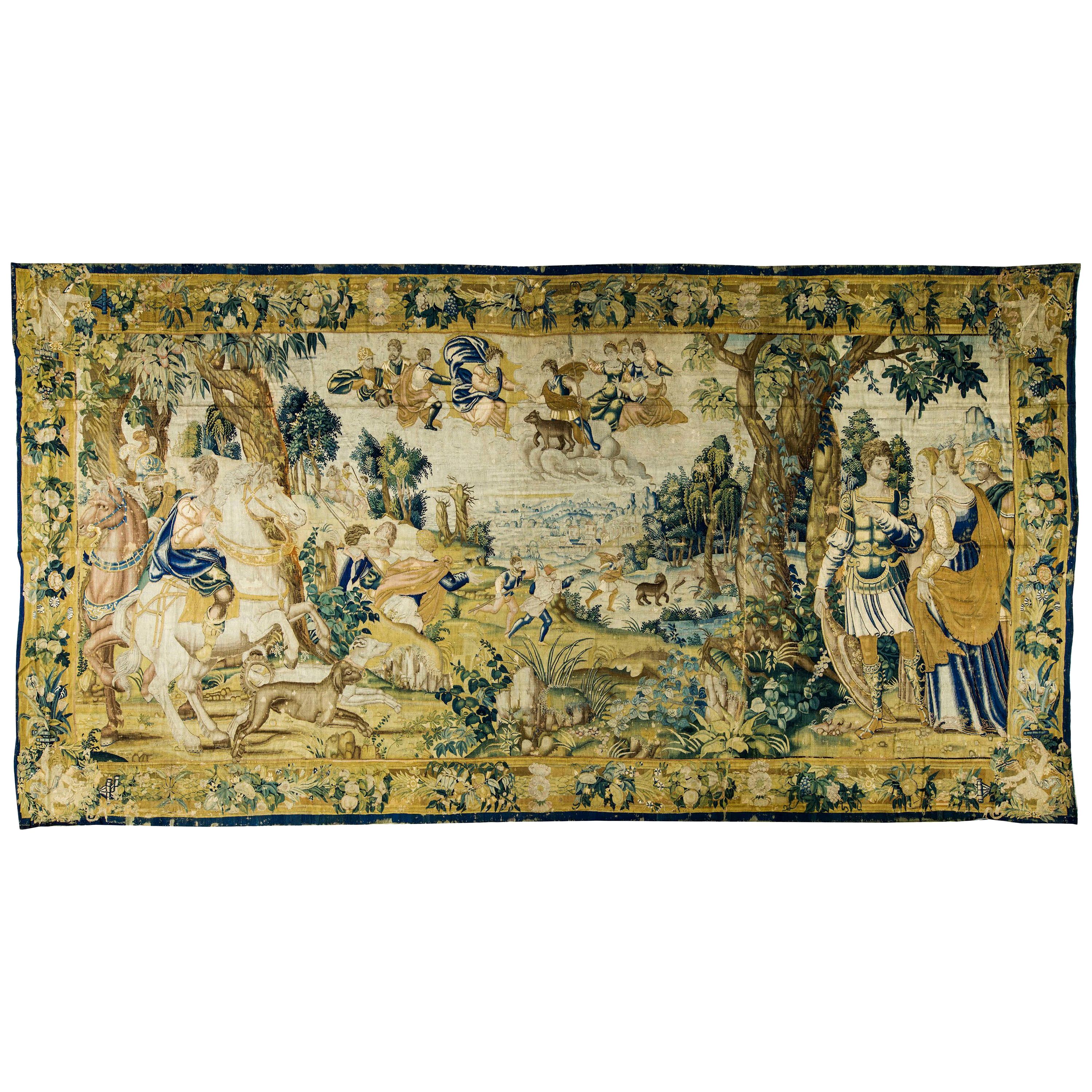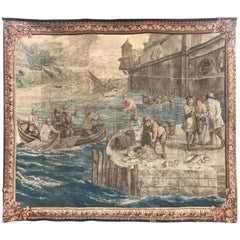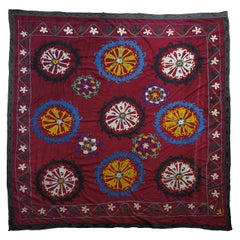
17th Century English Embroidery Needlework Tapestry
View Similar Items
1 of 6
17th Century English Embroidery Needlework Tapestry
About the Item
- Dimensions:Height: 36 in (91.44 cm)Width: 26.5 in (67.31 cm)Depth: 1 in (2.54 cm)
- Style:Jacobean (Of the Period)
- Materials and Techniques:
- Place of Origin:
- Period:
- Date of Manufacture:17th Century
- Condition:Wear consistent with age and use.
- Seller Location:Oakland Park, FL
- Reference Number:Seller: 0012681stDibs: LU94636702923
You May Also Like
- 17th Century Brabant, Belge TapestryLocated in Atlanta, GAAn exquisite and outstanding 17th century tapestry in silk and wool from Belgium. Signed "BB" (Brabant - Belge) and "LeClerc". Very unique for its subject matter and coloration. Wond...Category
Antique 17th Century Belgian Tapestries
MaterialsWool, Silk
- Brussels Late 17th Century Tapestry Asia from a Four Continents Series 9'4 x 18Located in New York, NYBrussels late 17th century tapestry, "Asia" from a Four Continents series. Designed by Lodowijk van Schoor, Woven in the Workshop of J. van der Borcht I Size: 9'4 high x 18' wide. Wool, silk and metal thread pattern wefts This extremely colorful and attractive late Baroque Flemish tapestry with a popular iconography is the product of two important figures in 17th century Brussels weaving. J. van der Borcht I (circa 1650–1713) was a master weaver and tapestry entrepreneur who established a most distinguished family tapestry firm and was followed by J. van der Borcht II, Jasper van der Borcht, Pieter van der Borcht and Jan Frans van der Borcht, taking the operations into the mid18th century. Their wealthy patrons allowed the firm to engage some of the best designers and as a result the artistic quality, as well as the sheer technical execution, is always high. The Van der Borchts wove tapestry series (or single pieces) of Mythological Scenes, Months, Allegories, Armorials, Triumphs of the Gods, The Continents, as well as more down-to-earth genre scenes designed or inspired by David Teniers II or Teniers III. Their artist designers included, besides the Teniers, Jan van Orley, Augustin Coppens, Gerard Lairesse, Phillipe de Hondt, and the Antwerp-born Lodowijk van Schoor (circa 1650–1702), the designer of U-1362. Van Schoor was the successor of David Teniers III. He was the designer or co-creator of about fifteen sets of tapestries. His cartoons were utilized and copied in both the Northern and Southern Netherlands, and continued popular well into the 18th century. His style, especially in his later works, is more harmonious and refined than Teniers and he avoided genre scenes with peasants. Van Schoor sometimes collaborated with other artists, for example Lucas Aertschellinck (1620 – 1699) who specialized in landscape backgrounds as in the set of Mythological Scenes” woven circa 1700 in the Van der Borcht shop. He did not collaborate on this tapestry, Van Schoor’s figures are graceful and his color schemes vivid, in keeping with the best of contemporary Flemish tapestry. Van Schoor’s designs influenced artists working at great remove from Brussels, even so far as the Florentine workshop of Bernini and Demignot where a Van Schoor inspired “Four Continents” set was woven in the early 1720s. The “Four Continents” or “Four Parts of the World” was a popular theme in the 17th and 18th centuries for tapestry patrons. Each continent was identified by native peoples and animals: America (North and South together) by Indians and the Turkey bird...Category
Antique 17th Century Belgian Tapestries
MaterialsWool
- Large Vintage Uzbek Suzani Needlework Textile Blanket or TapestryLocated in Antwerp, BELarge vintage Suzani Uzbek Samarkand textile, Suzani means needlework and these embroideries are some of the most characteristic forms of tex...Category
Mid-20th Century Uzbek Mid-Century Modern Tapestries
MaterialsSilk, Cotton
- 18th Century Tapestry FragmentLocated in New York, NYMid 18th century european Tapestry Fragment. Measures: 1'9'' wide x 2'10'' long. Tapestries make integral part of the Flemish cultural heritage. Most of the tapestries have religious, mythological and historical subjects as well as hunting and harvest scenes. They are known for their high quality and extended use of colors. The oldest ones were made in the 13th century. The most important production centers were Doornik and Arras. These two centers got a lot of assignments of the Dukes of Burgundy. In the 14th century tapestries...Category
Antique 18th Century French French Provincial Tapestries
MaterialsWool
- Antique Persian Rashti ‘Rascht’ Embroidery, 19th CenturyLocated in New York, NYHand-embroidered Chain stitched persian textile made in the middle of the 20th century. Silk elements found in the design with glowing vibrant colors executed by the weaver. Measures...Category
Antique Mid-19th Century Uzbek Victorian Pillows and Throws
MaterialsCotton, Silk
$7,000 Sale Price20% Off - French, Late 19th Century, Tapestry 5'3 x 8'6Located in Secaucus, NJA French late 19th century copy, of a classical 17th century Flemish tapestry, depicting Nymphs holding up an arch, which is enclosing a magnificent porcelain pot, filled to brimming...Category
Antique Late 19th Century French Tapestries
MaterialsWool
Recently Viewed
View AllMore Ways To Browse
Framed Sacred Heart
Tiger Scroll
Antique Needlework Embroidery
Flaming Heart
English Embroidery
17th Century Silk Embroidery
Tiger Lily
Tiger Lilies
Queen Elizabeth Roses
Antique Fleur De Lis Blue
Needlework 17th Century
English Silk Needlework
Tiger Tapestry
English Silk Embroidery
Elizabeth Rose Antiques
Antique English Embroidery
Silk Scroll Tiger
Fleur De Lis Tapestry

